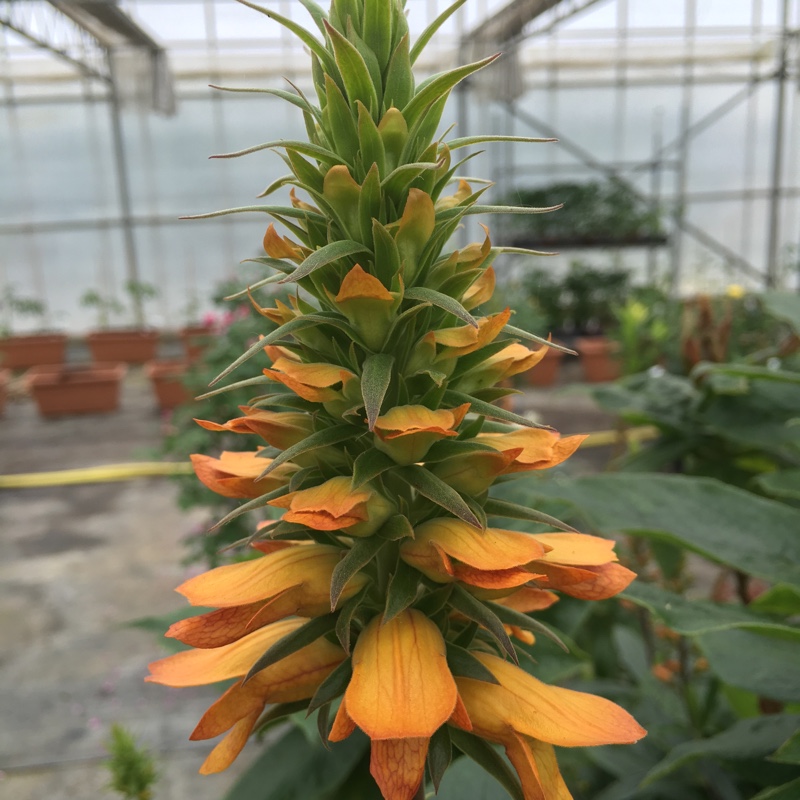
Isoplexis sceptrum
Giant Madeira Foxglove
Commonly known as the Canary Island foxglove, Isoplexis canariensis is an evergreen shrub, upright in habit, grow to 1.6m tall. Although capable of surviving temperature down to as low as -4C, it is best to avoid freezing temperatures wherever possible. 'Giant Madeira Foxglove' is like other Canary Isoplexis species, but much more robust and has broader, darker green leaves the flowers are large, and dark orange in dense spikes. In time it may become a tall woody shrub
Contributed by @mr_plantgeek
-
Partial shade
-
Occasional watering
-
A little frost hardy: 32F (0°C)
-
Moist and rich
Common name
Giant Madeira Foxglove
Latin name
Isoplexis sceptrum
type
Herbaceous Perennials
family
Plantaginaceae
ph
5.0 - 8.0 Acid - Neutral
Plant & bloom calendar
-
Best time to plant
-
When the plant will bloom
full grown dimensions
 0.40 M
1.60 M
0.40 M
1.60 M
Isoplexis sceptrum
Commonly known as the Canary Island foxglove, Isoplexis canariensis is an evergreen shrub, upright in habit, grow to 1.6m tall. Although capable of surviving temperature down to as low as -4C, it is best to avoid freezing temperatures wherever possible. 'Giant Madeira Foxglove' is like other Canary Isoplexis species, but much more robust and has broader, darker green leaves the flowers are large, and dark orange in dense spikes. In time it may become a tall woody shrub
Planting
From Early Spring TO Early Spring
Plant in sun or partial shade in humus rich, moist but free draining soil.
Propagation by seed
From Early Spring TO Late Summer
Sow seed from spring until late summer either in a frame or in the open ground. Divide the dependable perennial species in early spring.
Flowering
From Mid Summer TO Late Summer
Tall spires of tubular flowers in mid to late summer









